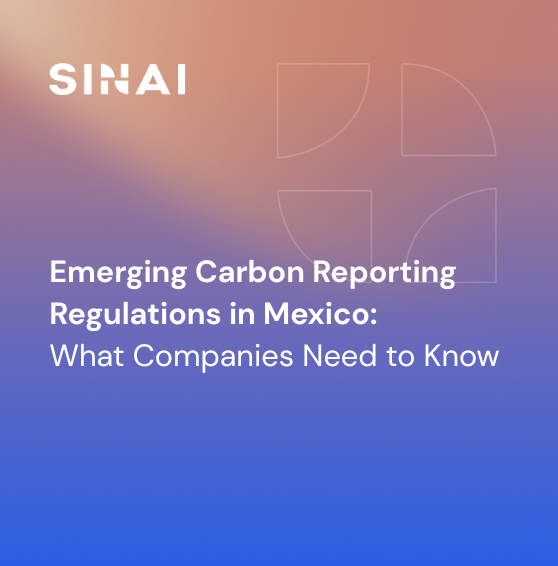.webp)
TCFD Recommendations: Climate-Related Financial Risks & Opportunities
In January 2021, the United Nations Environment Program Finance Initiative (UNEP FI) entered phase 3 of their banking pilot projects. Working with close to 50 financial institutions and investors, the UNEP FI is exploring ways to add depth, detail, and nuance to climate risk assessments, combine best practices in climate risk management, and standardize climate disclosures in the sector.
This collaborative work focuses on the four pillars of TCFD disclosures, including governance, strategy, risk management, and metrics and targets. The group is reviewing tools, frameworks, and thought papers to better address each of the recommended disclosures within each pillar.
As we wait for the findings of the pilot projects to be published, let’s take a step back and clarify what precisely the TCFD is and explain their recommendations so that your business can better understand how to adopt them in order to improve your climate-risk disclosures through TCFD reporting.
What is TCFD?

The Task Force on Climate-Related Financial Disclosures, also referred to as the TCFD, was created in 2015 to develop a suite of voluntary climate-related financial risk disclosures that firms can adopt to more efficiently inform investors, shareholders, and the public about climate change-related risks they face.
Established by the Financial Stability Board (or the FSB,) the TCFD works to coordinate disclosures among firms impacted by climate change. Their mission statement explains they aim to consider "the physical, liability and transition risks associated with climate change and what constitutes effective financial disclosures across industries."
The TCFD standards provide a foundation to improve shareholders, investor’s and other interested stakeholder’s ability to appropriately assess and put a price on climate-related risk and opportunities. The TCFD’s recommendations are meant to be somewhat ambitious but also practical for near-term adoption by companies. Intending to advance the quality of mainstream financial disclosures related to the potential impact of climate change on firms today and in the future, the TCFD promotes investor engagement with senior management and boards on climate-related issues.
TCFD recommendations
The TCFD’s core elements of recommended climate-related financial disclosures take the form of four pillars: governance, strategy, risk management, and metrics and targets. For the financial industry and other non-financial sectors, supplementary guidance has been developed to highlight critical sector-specific considerations and provide a more comprehensive picture of potential climate-related economic effects in those particular sectors.
Governance
This element suggests that firms develop overarching governance relating to their climate-related risks and opportunities.
Strategy
The TCFD’s strategy element advises companies to capture actual and potential impacts of opportunities and climate-related risks on your firm’s business activities, strategy, and financial planning.
Risk Management
The risk management element aims to highlight the processes used by your firm to identify, assess, and mitigate climate-related risks.
Metrics and Targets
The metrics and targets element advises firms to outline which metrics and targets it uses to assess and manage related climate-related risks and opportunities.
It’s worth noting that firms should make financial disclosures in line with their national disclosure requirements. Suppose some aspects of the recommendations are incompatible with national disclosure requirements for climate-related financial filings. In that case, the TCFD encourages companies to disclose those elements in other official business reports that are issued at least yearly, widely distributed, and available to key stakeholders and investors, and which go through internal governance processes that are the same or similar used for financial reporting.
The TCFD implementation guide
As is the case with so many frameworks, the crucial step remains in implementation. The TCFD Implementation Guide provides practical “how-to” guidance for firms to effortlessly transform the TCFD recommendations from principles to practice.
Co-produced by the Climate Disclosure Standards Board (CDSB) and the Sustainability Accounting Standards Board (SASB,) the TCFD Implementation Guide offers support to corporations across the globe, in all sectors and industries, drawing on stress-tested reporting frameworks to provide firms with practical how-to guidance.
For example, the guide includes annotated mock financial disclosures to help your firm with its own reporting efforts, helping your corporation adopt the TCFD recommendations and develop meaningful and accurate climate-related disclosures.
Incorporating the TCFD framework with ease
Improving the quality of climate-related financial disclosures starts with your firm’s willingness to adopt the TCFD’s recommendations. SINAI understands the challenges facing companies trying to accurately measure the impact of climate change, but by moving climate-related risks into your firm’s primary annual financial filings, techniques and practices can evolve and improve more quickly.
Next-generation data analytics can help your firm go further to improve the quality of climate-related financial disclosures and, ultimately, support more appropriate and accurate pricing of risks and allocation of capital in the global economy. With climate-related financial disclosure increasingly becoming a requirement, firms need to recognize climate risks and integrate a thorough understanding into decision-making to prepare for robust action and accurate disclosure.
SINAI’S software solution can help your firm report and take the next steps necessary in building a data-driven decarbonization strategy. With SINAI, your firm can effortlessly prepare and disclose comprehensive data and information in four stages to align with TCFD standards. Contact us for a demo of our software today!

-2.png)
%20(7).png)








